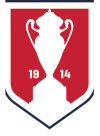There was no Major League Soccer in 1965. No NASL or USL either. But there was the German-American Soccer League, a stew of ethnic clubs clustered in and around New York City’s five Burroughs. Teams played in God-forsaken corners of the city, under bridges in Brooklyn and up in the Bronx, on the ragged edges between salvage yards and dockyards, manufacturing plants and airports. And it was the best soccer in America.
“These were the most exciting games back then,” said Dr. Joe Machnik, familiar to American soccer fans of today as Fox Sports’ resident rules analyst. But back in the day this native of Greenpoint, Brooklyn had a front-row seat to all the action as back-up goalkeeper for 1965 Open Cup champions New York Ukrainians. “You had great rivalries. The quality was high. We had some great players.”
One of those greats was Walter Schmotolocha. Whether you called him Woldoymyr or Walter, Walt or Junio – his nickname in the team – the diminutive midfielder was one of the best American players of his time. “He was the pride and joy of the Ukrainian-American community,” recalled Machnik with a smile.
The ragged edges
“The fields were a disgrace,” said Schmotolocha from his home in Kerhonkson, a tiny hamlet in the Hudson River Valley with a large Ukrainian population. His voice is a mish-mash of old-time New York, Eastern Europe and proud 76-year-old granddad. “Nothing but glass bottles and trash out there. There were rocks everywhere. It was always muddy when it rained. You had no idea where the ball was going to bounce, so you had to be ready. I used to call it, ‘running the obstacle course!’”
All the teams played on fields like these. The Metropolitan Oval was built in 1925, two years after the league’s birth. Other teams played at the Throggs Neck Oval in the Bronx. “I remember one that was really bad,” chuckled Schmotolocha, a collegiate All-American at the Pratt Institute who was born and raised in Manhattan’s East Village, then crowded with Ukrainian immigrants. “It was next to a manufacturing plant in Ridgewood in Brooklyn and there was nothing but trash and stones and busted bottles.”
These fields were home to the shining lights of the day: the likes of New York Hungaria, loaded with pros who fled the 1956 Hungarian Revolution. The New York Greek Americans, who most referred to simply as The Greeks, played on these fields too, and so did S.C. Eintracht and many, many more.
“They were the great equalizer,” Machnik said of those rough fields, built for football and often very narrow. The Ukrainians’ home pitch was out on the northwest corner of Queens, across Flushing Bay from LaGuardia airport. The club rented land in College Point and renamed it Ukrainians Sports Field. “There were salvage yards on both sides,” remembered Schmotolocha. And Machnik’s memories are the same: “There was no grass – not a blade. It was an industrial area with abandoned cars everywhere.”
Open Cup – A coveted prize
“Open Cup games were always extra special; they had extra weight behind them with the rivalries and pressure,” said Machnik. The German-American league regularly produced Open Cup champions, which was touted by the New York Times in those years as “the most coveted prize in American Soccer.”
The pressure was doubled on the New York Ukrainians because their sister club, Ukrainian Nationals of Philadelphia, had a stranglehold on the Cup. They won it three times between 1959 to 1963. And the road to the 1965 final was anything but smooth for the New Yorkers. There 131 participants at the start and they had to beat a raft of local rivals before booking a date with Hansa Chicago – another ethnic side and champions of the West – in a two-legged final. “We beat Elizabeth (of New Jersey) and The Greeks, and I don’t remember who else because I was just a player,” said Schmotolocha, who also won the Open Cup in 1972 with S.C. Elizabeth after putting in two years of military service down south in Georgia. “I showed up at the field and played the team in front of me. Didn’t matter who, or what stage, it was just a soccer game for me.”
Schmotolocha’s performances weren’t always restricted to the rocky ovals of Gotham. In March of 1965, he earned a pair of caps for the U.S. Men’s National Team. “It was silent after the American anthem played at the LA Coliseum, but after the Mexican anthem, the place went wild!” the playmaker, with a vicious long-distance shot, remembered of that qualifier for the 1966 World Cup. He scored a free-kick on the day in a 2-2 draw. “I was looking around asking myself: What country am I in right now?”
If you’re good enough, you’re Ukrainian enough
The Ukrainian team of 1965 wasn’t all Ukrainian. None of the teams were homogenous. Machnik wasn’t Ukrainian and neither was Peter Smethurst or his brother Derick, a South African who played for Chelsea. The late Gordon Bradley, the team’s player-coach in 1965, was born in England and went on to coach the U.S. National Team and star-studded NASL glamor-boys NY Cosmos. But the vast majority of the ’65 side grew up together, from sandlot ball through the club’s youth systems, and by the time they reached the Open Cup final they were the best teams in America.
The first leg finished 1-1 at home in Queens. “We had the edge,” recalled Schmotolocha, who went on to start a shipping business after his soccer days. Hansa’s star forward Willy Roy, who played for nearly a decade in the U.S. National Team and later coached the NASL’s Chicago Sting, scored the goal for the visitors. “It wasn’t too hot and there were some clouds. We were just feeling each other out and we missed a few good chances, but we knew the result was a good one for us. They weren’t much trouble.”
When they got to Chicago seven days later, and out on Hansa’s Hasnson Park Stadium, it was a different story altogether. “We took them apart at their place. They had this nice little stadium, almost brand-new, and about 5,000 people were out to watch us,” said Schmotolocha, who scored in the 4-1 rout. “The field was flat, really nice and clean, so we didn’t have to run the obstacle course! We moved the ball, controlled it. It didn’t fly away from us. And we destroyed them.”
Chicago’s victory shindig
Machnik missed the final because of a job he couldn’t get out of. “That was too bad for him,” said Schmotolocha, telling of the victory party that followed the trophy ceremony.
“There was a Ukrainian guy, a doctor in Chicago, and he took us all out to the best restaurant in the city. I remember it right now. It was like Caesar’s Palace in Las Vegas. There were four tiers and those half-moon booths you see in the movies. And it was some party,” Schmotolocha said. He could have just as easily been talking about the whole 1965 Cup run, or the entirety of his youth, and those days out in the Ovals that he remembers so fondly.
“After that, we all flew back to our lives. Those were our 15 minutes of fame,” he said in his old man’s voice. “But boy was it fun.”







